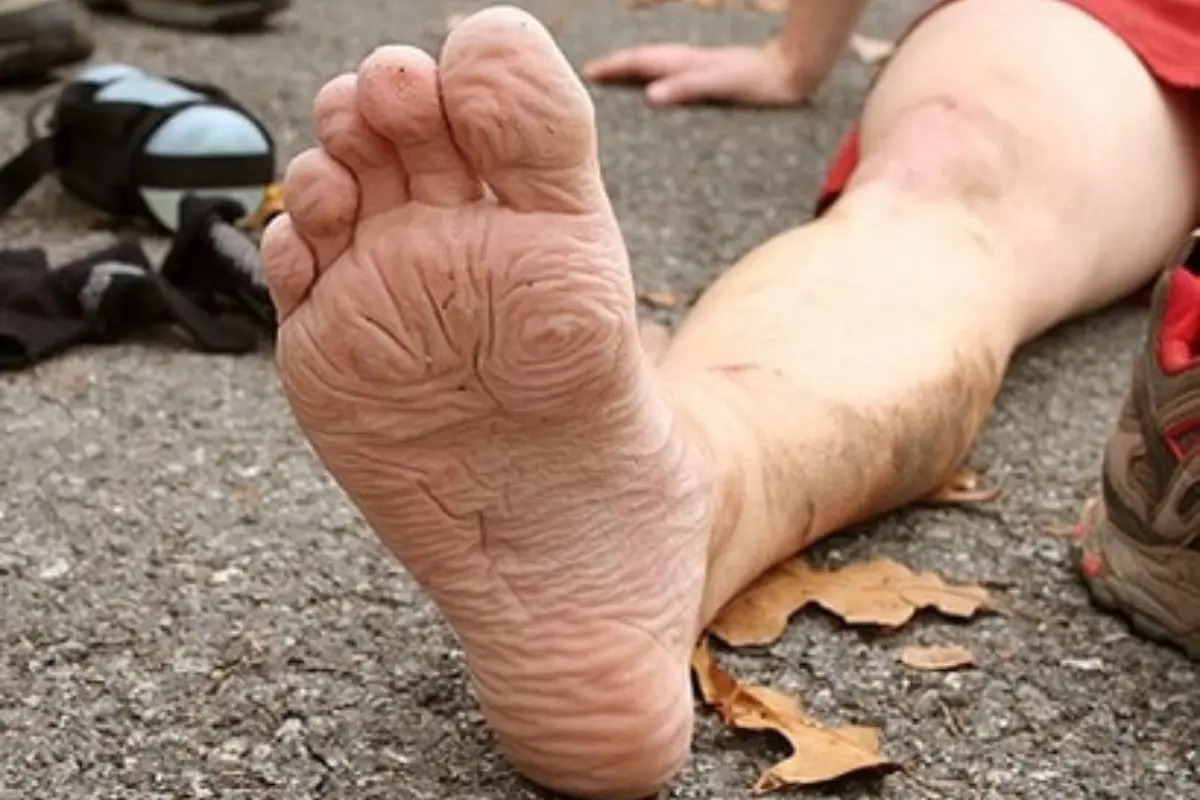
Have you ever wondered what happens to your feet when they're wet for too long? Immersion foot syndromes, often called trench foot, are injuries caused by prolonged exposure to damp conditions. These conditions can range from mild discomfort to severe tissue damage, even leading to amputation. First described in 1812, trench foot became infamous during World War I. Soldiers in cold, wet trenches suffered from this painful condition. Symptoms start with tingling and itching, progressing to numbness and severe pain. Keeping feet dry is crucial for prevention. Understanding the causes, symptoms, and treatments can help you avoid this painful condition and ensure proper care if affected.
What Are Immersion Foot Syndromes?
Immersion foot syndromes, often called trench foot, are injuries caused by prolonged exposure to wet conditions. These conditions can range from mild discomfort to severe tissue damage. Let's dive into some key facts about these syndromes.
-
Definition and Classification: Immersion foot syndromes are injuries caused by water absorption in the skin's outer layer. They are classified based on water temperature: trench foot, tropical immersion foot, and warm water immersion foot.
-
History: First described by a French army surgeon in 1812, the condition gained notoriety during World War I when soldiers in trenches suffered from it due to cold, wet conditions.
Causes and Symptoms
Understanding the causes and symptoms of immersion foot syndromes can help in early detection and prevention.
-
Causes: Trench foot results from prolonged exposure to damp, unsanitary, and cold conditions. This can happen in military trenches, construction sites, or even daily life without proper foot care.
-
Symptoms: Initial symptoms include tingling and itching, progressing to numbness. Feet may feel heavy and appear bright red. As it worsens, the skin turns pale and clammy due to poor blood flow.
-
Temperature Range: Trench foot can develop in temperatures above freezing, typically between 30°F to 40°F (-1°C to 4°C), but also in warmer climates with prolonged wet conditions.
Risk Factors and Stages
Certain factors increase the risk of developing immersion foot syndromes. Knowing the stages of development can aid in timely intervention.
-
Risk Factors: Excessively sweaty feet (hyperhidrosis) and standing in wet socks and shoes for long periods increase the risk.
-
Stages of Development: Trench foot progresses through four stages: exposure, pre-hyperaemic, hyperaemic, and post-hyperaemic. Each stage has distinct characteristics and symptoms.
-
Hyperaemic Stage: Characterized by intense blood flow, swelling, and severe pain due to the release of vasodilator metabolites in chilled tissues.
-
Post-Hyperaemic Stage: Occurs within 7-10 days of rescue, with reduced swelling and pain but potential nerve damage, leading to sensory disturbances and muscle atrophy.
Complications and Prevention
Complications can arise if immersion foot syndromes are not treated promptly. Prevention is key to avoiding these conditions.
-
Cold-Sensitivity: Feet become abnormally cold-sensitive after several weeks, often accompanied by excessive sweating. The exact causes are not fully understood.
-
Complications: Advanced trench foot can lead to blisters, open sores, fungal infections, and in severe cases, gangrene, which may necessitate amputation.
-
Prevention: Keeping feet dry is the best prevention. Soldiers in World War I were advised to change socks frequently and use whale oil. Today, good foot hygiene and regular sock changes are essential.
Diagnosis and Treatment
Early diagnosis and treatment are crucial for a good prognosis. Here’s what you need to know.
-
Diagnosis: Diagnosed through physical examination, looking for signs of poor vascular supply. Tests like white blood cell counts or ESR may be performed to rule out infections.
-
Treatment: Resting and elevating the affected foot encourages circulation. Pain and swelling can be managed with ibuprofen, aspirin, or acetaminophen.
-
Home Remedies: Early symptoms can be treated by removing wet socks, cleaning and drying feet, and applying heat packs for up to five minutes. Persistent symptoms require medical attention.
-
Medical Treatment: Severe cases may need advanced measures. Rapid warming of chilled tissues is generally avoided, but cold therapy can help relieve pain during the hyperaemic stage.
Prognosis and Recovery
The outlook for immersion foot syndromes varies based on the severity and timeliness of treatment.
-
Prognosis: Early treatment can prevent complications, but delayed treatment may lead to severe outcomes, including amputation. The extent of anaesthesia at 7-10 days helps guide prognosis.
-
Recovery: Complete recovery is possible with proper treatment, though severe short-term pain may occur when feeling returns. Affected individuals are more susceptible to future occurrences.
Other Forms and Prevalence
Immersion foot syndromes come in different forms and can affect various groups of people.
-
Other Forms of Immersion Foot: Besides trench foot, there are tropical immersion foot and warm water immersion foot. Tropical immersion foot occurs in water or mud above 72°F for 2-10 days, while warm water immersion foot results from exposure to warm, wet conditions for 48 hours or more.
-
Prevalence: While commonly associated with military personnel, immersion foot syndromes can affect anyone exposed to prolonged cold and wet conditions, including homeless individuals who frequently use wet shoes and socks.
Final Thoughts on Immersion Foot Syndromes
Immersion foot syndromes, like trench foot, are serious conditions caused by prolonged exposure to wet, cold environments. They can lead to symptoms ranging from mild discomfort to severe tissue damage and even amputation. Understanding the causes, symptoms, and treatment options is crucial for prevention and management. Keeping feet dry, changing socks regularly, and maintaining good foot hygiene are essential preventive measures. Early treatment can prevent complications, while delayed treatment can result in severe outcomes. Complete recovery is possible with proper care, though those affected may be more susceptible in the future. By staying informed and vigilant, individuals can reduce the risk of developing these conditions and ensure proper recovery if affected. Remember, taking care of your feet is not just about comfort; it's about preventing serious health issues.
Was this page helpful?
Our commitment to delivering trustworthy and engaging content is at the heart of what we do. Each fact on our site is contributed by real users like you, bringing a wealth of diverse insights and information. To ensure the highest standards of accuracy and reliability, our dedicated editors meticulously review each submission. This process guarantees that the facts we share are not only fascinating but also credible. Trust in our commitment to quality and authenticity as you explore and learn with us.


